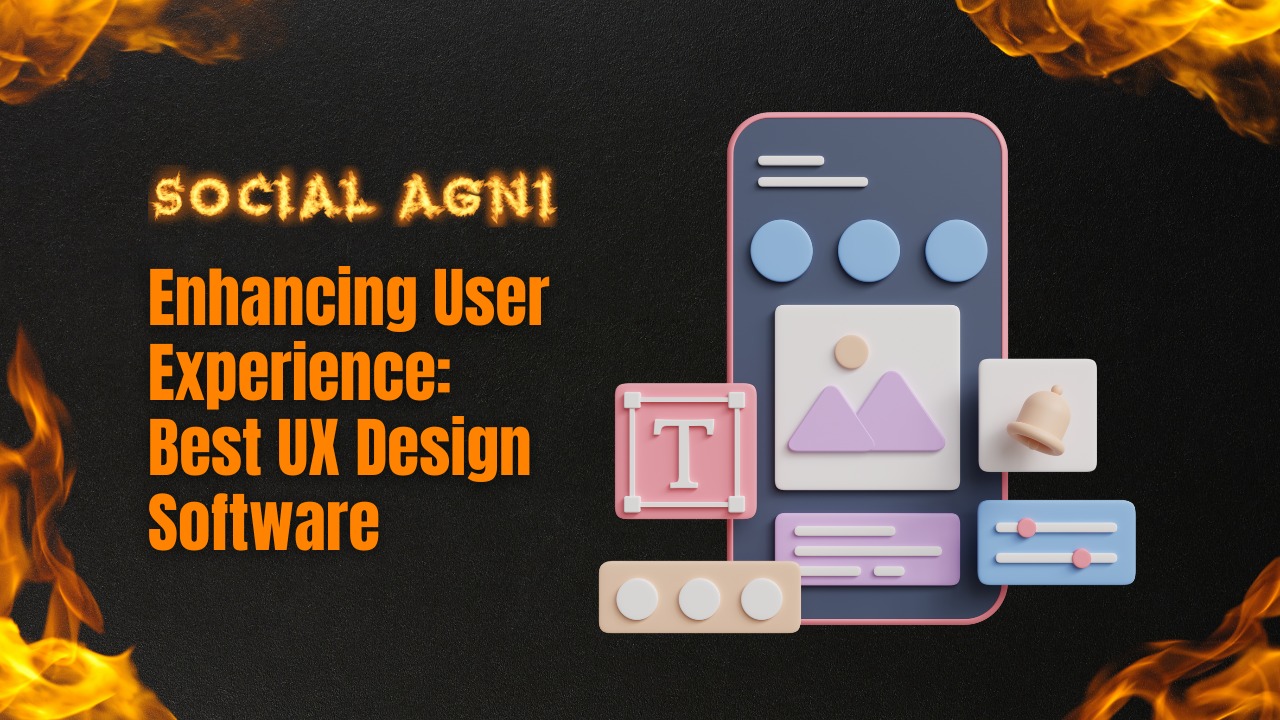UX is crucial to product success in today’s digital world. To engage consumers, build customer loyalty, and develop a business, a website, mobile app, or software must provide a smooth and intuitive user experience. UX design software is crucial to great UX. UX design software helps designers create user-centered and attractive interfaces. These software tools let designers prototype, wireframe, and enhance their designs using a wide range of capabilities. They streamline workflow, enable communication, and integrate with other design and development tools, helping teams operate efficiently. UX software has several advantages. First, interactive prototypes let designers test and confirm their designs before development. This iterative method helps uncover usability issues, make adjustments, and provide a product that connects with the target audience. UX design software centralizes communication, feedback, and version control, promoting teamwork. It streamlines collaboration between designers, developers, and stakeholders to meet user experience goals. UX design software commonly combines with usability testing technologies, giving designers useful insights into user interaction. Usability tests help designers discover pain areas, get user input, and make data-driven decisions to improve the user experience. This post will discuss how to choose the finest UX design tools and present some of the top options. Real-world case studies will show how these software solutions improve user experiences. We’ll also offer UX design software optimization advice. This post will explain the importance of UX design software and how it may improve user experiences. Using UX design software will improve your design process and help you develop things that last. I. Understanding UX Design Software Understanding UX design software’s goal, essential features, and design process advantages is crucial to appreciating its worth. Let’s examine A. Definition and Purpose of UX Design Software UX design software helps designers create user-centered interfaces and optimize digital product user experiences. Its features and functions help designers envision, create, prototype, and enhance their concepts. UX design software helps designers develop intuitive, attractive, and engaging user interfaces by streamlining the design process. It helps designers envision and test their ideas by turning them into interactive prototypes and wireframes. B. Essential UX Design Software Features Prototyping and Wireframing UX design software lets designers generate interactive, clickable mockups. These capabilities let designers replicate user interactions, transitions, and animations to model the final product’s user experience. Design Libraries and Assets Many UX design software packages provide icons, UI components, and templates. By providing a framework for design aspects, these tools save time and effort. Collaboration and Team Workflow Real-time editing, commenting, and version control enable teamwork in UX design tools. These features promote smooth communication and cooperation between designers, developers, and stakeholders, resulting in a user-centric design process. Responsive Design Mobile devices require responsive design. UX design software lets designers develop adaptable layouts that adjust to varied screen sizes and devices, delivering a consistent and optimum experience across platforms. Usability Testing Many UX design software solutions contain usability testing tools to help designers evaluate their designs’ usability and effectiveness. Usability testing features detect pain points, usability concerns, and ways to improve user experiences.. UX Design Software Benefits UX design software helps designers develop intuitive, attractive, and user-friendly interfaces. It gives designers a variety of design and prototype tools to iterate, test, and improve their ideas to improve user experience. UX design software’s ready-to-use design materials, templates, and collaborative tools save time and money. Designers may focus on developing great user experiences without reinventing the wheel. UX design software helps designers, developers, and stakeholders collaborate. It centralizes design exchange, feedback, and coordination. Collaborative design iterations improve efficiency. UX design software lets designers visualize their ideas. Designers may improve interface usability by visualizing and testing design concepts early in the process. II. Criteria for Selecting the Best UX Design Software A smooth design process requires the correct UX design software. When choosing UX design tools, consider these criteria A. User-Friendly Interface and Design Tools Choose software with an intuitive interface and design tools. Designers should be able to rapidly understand the tools and start designing. Drag-and-drop, smart instructions, and a clear interface improve program usability. B. Robust Prototyping and Wireframing Tools Ensure the program supports prototyping and wireframing. Interactive components, transitions, and animations make prototypes lifelike. Simulating user experiences requires linking screens and defining interactions. To cover many design situations, the program should allow tap, swipe, scroll, and hover. C. Teamwork & Collaboration Consider software with extensive collaborative features to expedite design. Designers, developers, and stakeholders need real-time editing, commenting, and version control. Design sharing, annotations, and feedback gathering aid team collaboration. D. Integration with Other Design and Development Tools Make sure the UX design software works with other design and development tools. Integration with graphic design software, project management tools, design libraries, and prototyping platforms improves efficiency and workflow. Designers can quickly integrate assets, export designs, and collaborate across software systems. E. Platform Compatibility and Responsiveness Consider your design’s platforms and devices. Ensure the software supports web, mobile, and desktop design. It should let you develop responsive layouts for multiple screen sizes and resolutions. This enables uniform and accessible user experiences across devices and platforms. F. Accessibility and Usability Testing User experience requires accessibility. Find software that tests accessibility or interfaces with external tools. Consider usability testing software to acquire user feedback, perform user testing sessions, and evaluate user behavior to enhance design usability and effectiveness. Try out UX design software to see whether it matches your demands. Read user reviews, visit online groups, and ask design professionals about the software’s pros and cons. Read Also 15 Must-Have Plugins For Creating Killer Content Marketing Strategies III. Top UX Design Software Solutions There are several excellent UX design software options. Let’s examine some of the best ways to improve your design process and generate great user experiences A. Adobe XD A robust UX design and prototyping tool. It has a simple UI, powerful prototyping, and a seamless connection with Adobe Creative Cloud apps. Adobe XD lets designers build interactive prototypes with responsive scaling, repeat grids, and auto-animate.
